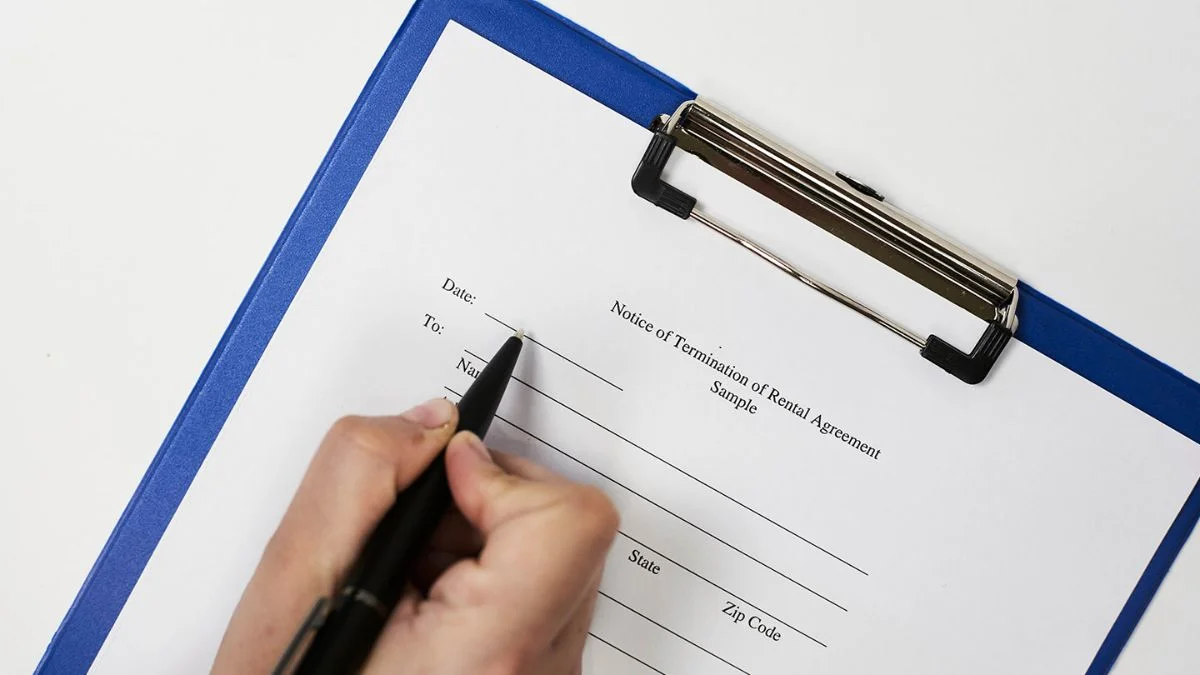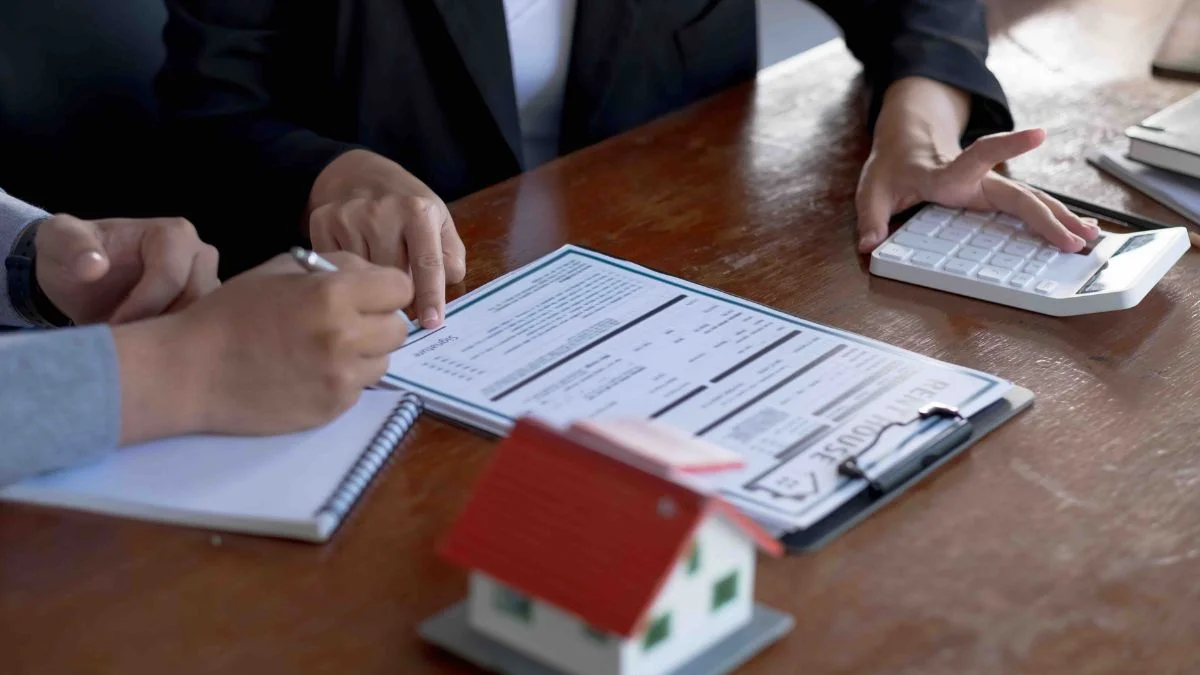At LeaseRunner, we know lease agreements don’t last forever. Whether you’re a landlord opting not to renew a lease or a tenant planning to move out, writing a non-renewal of lease letter is a vital step in the leasing cycle.
This guide will walk you through the process how to write a non-renewal lease letter step-by-step, offering practical examples, legal context, and free templates.
What Is a Non-Renewal Lease Letter?
A non-renewal lease letter is a formal notice sent by either the landlord or the tenant to indicate that the current lease will not be extended past its expiration date. It is not an eviction notice or a complaint, it’s simply a declaration of non-renewal.

For instance, imagine a tenant whose one-year lease ends on December 31, 2025, should send a letter of non-renewal of lease at least 30–60 days in advance (depending on state law). A letter of non-renewal of lease prevents confusion and lays out expectations.
What to Include in a Non-Renewal Notice?
When drafting your letter for not renewing the lease, certain key pieces of information are essential for clarity and legal compliance. Make sure your no-renewal of lease letter includes:
- The date the letter is being written is the current date.
- Tenant and landlord names and addresses: Both parties' current mailing addresses and full legal names.
- The leased unit's property address is: The rental property's full address.
- The precise date of the lease's expiration: the precise date on which the current lease expires.
- An explicit declaration that the lease will not be renewed: Make it clear that there will be no lease renewals.
- Any pertinent notice-period provisions from the original lease agreement.
- Reason for non-renewal (optional): While not always required, you may include a brief explanation, such as selling the property, moving back in, or converting to short-term rental.
- Guidelines for the move-out process, which include property inspection and key return: Give precise instructions on what to do next.
- Both parties' contact details: Email addresses and phone numbers for convenient communication.
- Landlord’s signature: Sign the letter to formalize the notice. If representing a company, include your printed name and title.
Regulatory Framework and Best Practices for Non-Renewal Lease Letter

Understanding the legal landscape is paramount when writing a non-renewal lease letter. Lease agreements often specify a notice period (e.g., 30, 60, or 90 days) that both landlords and tenants must adhere to. Failing to provide timely notice may result in automatic lease renewal or continuation under a month-to-month tenancy, depending on state laws and the lease terms. This transition is not inherently negative but may not align with the landlord’s or tenant’s plans.
For example, notice period requirements vary by state:
- California: Requires 30 days notice (if tenancy is under one year)
- Texas: Typically 30 days notice (unless stated otherwise in lease)
- New York: Requires 30–90 days notice based on lease duration
Always review your original lease agreement carefully to determine the required notice period. Additionally, local and state laws may have specific requirements for non-renewal notices, such as how the notice must be delivered (e.g., certified mail, in-person). For instance, some states require that a non-renewal notice include specific legal language. It's wise to consult these regulations or seek legal advice if unsure. Ensuring your letter of non-renewal of lease complies with all applicable rules protects you.
How to Write a Non-Renewal Lease Letter? Step-by-Step Guide

Writing a successful sample letter of non-renewal doesn't have to be difficult. Use these guidelines to make sure your letter of non-renewal is comprehensive and expertly written.
1. Review Lease and Local Laws
Before taking any action, carefully review your lease agreement, especially the sections on notice periods, lease termination, and penalties for insufficient notice. Don’t overlook any regulations related to non-renewal notices under local landlord-tenant laws.
Keep in mind that non-renewal letters are only valid in non-just-cause eviction states. In states with just-cause eviction laws (e.g., California, Washington, D.C., Oregon, Colorado), a landlord cannot issue a non-renewal notice without a valid legal reason.
Special Cases for Non-Renewal:
- Non-payment of Rent: If the tenant fails to pay rent on time, the landlord may decide not to renew the lease.
- Violation of Lease Terms: If the tenant violates terms of the lease (e.g., causing property damage, disturbing neighbors), non-renewal is an option.
- Illegal Use of the Property: Using the rental property for illegal activities can justify non-renewal.
- Property Abuse or Endangering the Property: If the tenant damages or creates unsafe conditions, non-renewal may occur.
- Criminal Activity: Serious criminal violations or illegal activities conducted on the rental property may lead to non-renewal.
- Severe Violation of Health and Safety Codes: Failing to maintain cleanliness or refusing landlord inspections may result in non-renewal.
- Abuse of Property: If the tenant uses the property excessively or causes significant damage, non-renewal could be considered.
Failing to comply with these laws can expose you to legal risks and serious consequences.
2. Gather Essential Information
Collect all necessary details for not renewing lease letter, including:
- Names of tenant(s) or landlord
- Full property address
- Lease start and end dates
- Move-out deadlines
3. Format Your Letter Professionally
A formal letter should be easy to read and professional. Use a business letter format:
- Block alignment
- Clear subject line
- Simple, respectful language
4. Clearly State the Intent Not to Renew
Your letter of non-renewal revolves around this. Declare clearly that, as of the lease expiration date, you do not plan to extend the lease for the property at the given address. Be clear-cut and straightforward.
5. Include Next Steps and Expectations
Describe the next course of action. For renters, this can entail setting up a move-out inspection and talking about the security deposit reimbursement. If the lease permits it, it might include information about showing the property to potential new tenants.
For example, "We will contact you shortly to arrange a convenient time for prospective tenants to view the property, with 24-hour notice as per our agreement."
6. Add Contact Details
Give your clear contact details so that people can get in touch with you with any questions or to talk about the move-out procedure. This contains both an email address and a phone number.
7. Sign the Letter
To ensure the authenticity of the letter, always sign it. All parties named on the lease should sign it if there are several landlords or tenants. Put your name in print beneath your signature.
8. Deliver the Notice Properly
The method of delivery is as important as the letter itself. Send the notice via certified mail with a return receipt requested to have proof of delivery. This creates a legal paper trail. You can also deliver it in person and have the recipient sign an acknowledgment of receipt. Some jurisdictions also accept email or electronic delivery if explicitly agreed upon in the lease.

Sample Template Letter for Non-Renewal Lease Letter
The process can go much more smoothly if you have a good example of lease renewal letter. We have two excellent templates ready for you:
Template Non-Renewal Notice For Landlord
This sample letter landlord not renewing lease is designed for landlords to formally notify their tenants that the lease will not be renewed.
Template Non-Renewal Notice For Tenant
This sample letter of non renewal template is for tenants who wish to inform their landlord that they will not be renewing their lease agreement.
6 Reasons You Should Draft a Non-Renewal Lease Letter

Beyond simply informing the other party, drafting a clear non-renewal lease letter is a crucial step. Here are six important reasons why you shouldn’t skip this process:
1. Legal Compliance
Formal notice is required by local laws and the majority of lease agreements. By ensuring that you comply with these legal requirements through a formal letter, you can avoid future disputes or automatic lease renewals.
For example, if your lease states a 30-day notice is required and you don't provide it, you could be held liable for an additional month's rent even if you move out.
2. Provides Clear Documentation
An official record of your intent is created by a non-renewal letter. This documentation provides unambiguous proof of communication and is extremely helpful in the event of future disputes. In the event that a landlord tries to charge you for an additional month after claiming they were not informed, the letter and your certified mail receipt provide indisputable proof.
3. Sets Clear Expectations
Without a written notice, it's easy for confusion to creep in - especially if one party assumes the lease will continue on a month-to-month basis. A well-written non-renewal lease letter spells out key details like the end date, move-out procedures, or final inspection, so everyone is on the same page.
4. Helps With Security Deposit Returns
A valid non-renewal notice improves the chances of a timely and complete return of the security deposit and facilitates a smooth move-out for tenants. It prepares the ground for a thorough final inspection and repairs for landlords. The letter can be used to mark the end of your accountability for the state of the property.
5. Maintains Professionalism and Good Relations
It is advantageous to keep up a professional relationship even if a lease is not being renewed. A polite, unambiguous letter promotes goodwill and helps prevent hostility. For landlords who may eventually need to provide references for tenants, this is especially crucial.
6. Creates a Clear Timeline for Transition
The letter establishes a firm timeline for vacating the property or for a landlord to find new tenants, aiding in efficient planning for everyone involved. This timeline is crucial for landlords to begin marketing the property and for tenants to secure new housing.
What Landlord Should Do After Sending Non-Renewal Letter?
Once you, as a landlord, have sent your no-renewal of lease letter, there are several important steps to take to ensure a smooth transition:
1. Confirm Receipt of the Letter
Follow up to ensure your tenant received the non-renewal notice. This can be through a delivery confirmation if sent via certified mail or a direct acknowledgment.
For example, you might send a follow-up email asking, "Did you receive the non-renewal notice sent on [Date]?" This confirmation aids in preventing misunderstandings or legal misunderstandings.
2. Review the Move-Out Timeline
Double-check the lease expiration date and the timeline provided in your letter of non-renewal of lease. Add the move-out date to your calendar and make plans accordingly.
3. Communicate Next Steps
Proactively communicate details about the move-out process, such as
- Cleaning and maintenance expectations
- Return of keys and access devices
- Provide a checklist if possible
4. Prepare for Final Inspection
Before the tenant leaves, arrange for a last tour of the property. Examine the present state in comparison to your initial checklist for moving in. Make a note of any damage that goes beyond typical wear and tear.
5. Settle Remaining Balances
Before move-out, issue a clear and itemized statement of any unpaid rent, utility bills, or fees. Transparency here minimizes conflict.
6. Exchange Contact Information
Ensure you have up-to-date contact information for the tenant for any post-move-out communications, especially regarding the security deposit. A new forwarding address is crucial.
7. Return/Collect Keys
Coordinate the return of all keys, garage remotes, gate cards, and other access tools. Keep a record of the returned items and the date.
8. Request or Provide Final Statements
Provide a written statement of the final account, including how the security deposit is handled. Many states have strict timelines- know your local laws and comply.
9. Document the Condition of the Unit
Take photos or videos of the property immediately after the tenant leaves. This documentation supports any damage claims and helps in your next tenant screening.
10. Wrap Up Utilities and Services
Return utilities to your name or the next tenant's name. Plan service shut-offs in advance if the property will be unoccupied. This guarantees that there won't be any needless billing or service interruptions.
How to Improve Your Tenant Search Following a Non-Renewal
A non-renewal of lease letter often signals a new opportunity: finding the right tenant for your property. To reduce vacancy periods and improve tenant quality, here’s how we recommend preparing for your next lease cycle:
Prepare the Property for Marketing
Make sure the property is well-maintained and cleaned after your current tenant vacates. To attract potential tenants, take care of any maintenance concerns and think about painting or making small improvements. For online listings, high-quality photographs and perhaps a virtual tour are crucial.
Set a Competitive Rent Price
Examine the going rates for comparable properties in your neighbourhood. Offering competitive rental rates will draw in more eligible candidates and shorten the time that vacancies occur. You can evaluate local market trends with the use of tools like Rentometer or Zillow.
Strengthen Tenant Screening Process
A strong screening process helps you avoid future non-renewals caused by unreliable tenants. For instance, a detailed credit report can reveal payment patterns, while eviction history uncovers legal red flags.
And this is where we at LeaseRunner make a difference. Our platform empowers landlords with a full suite of tenant screening tools, including:
- Credit Reports
- Background Checks
- Criminal History Reports
- Eviction Records
- Income Verification Tools
- Digital Rental Applications
- Electronic Lease Signing
Conclusion
More than merely a formality, writing and sending a non-renewal lease letter is essential for safeguarding your legal rights, maintaining open lines of communication, and facilitating a seamless turnover. A well-written notice guarantees that everyone agrees, whether you're a renter organising your move or a landlord getting ready for the next tenant.
At LeaseRunner, we support landlords with the tools to not only handle lease non-renewals professionally but also to improve every step of the leasing cycle - from screening to signing.







